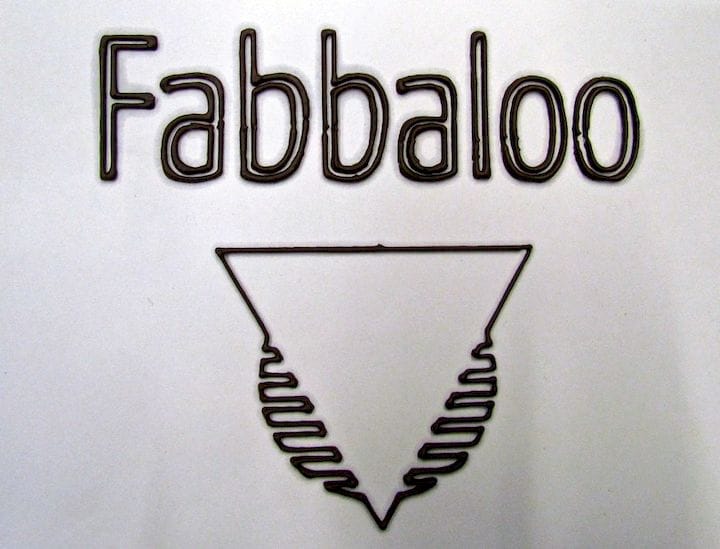![An edible 3D printed chocolate logo [Source: Fabbaloo]](https://fabbaloo.com/wp-content/uploads/2020/05/image-asset_img_5eb0a52be0e5d.jpg)
How exactly should food 3D printers be used for an advantage?
When discussing 3D printing with those unfamiliar with the concept, the second or third question invariably is “can I print my dinner” or similar. After some sighs, I do explain the current state of 3D printing food, which isn’t great at this time.
Yes, there are indeed several food 3D printers on the market. They tend to be paste extruders, where the food material is first reduced to a paste with a food processor, and then pushed through a syringe with a noisy air compressor hookup. And voilà, you have a 3D printed cookie. Or at least the dough for one.
![3D printed food examples [Source: Fabbaloo]](https://fabbaloo.com/wp-content/uploads/2020/05/image-asset_img_5eb0a52c4f524.jpg)
In almost all cases it makes no sense, technically, financially or functionally to 3D print dinner. It would take too long, cost too much and possibly be toxic if improper equipment was used.
But there are some ways that food 3D printing could provide some benefits, if food printers – both machines and operators – took advantage of them.
![3D printed food samples [Source: Fabbaloo]](https://fabbaloo.com/wp-content/uploads/2020/05/image-asset_img_5eb0a52c9ae59.jpg)
Complex Geometries: Some expert chefs, particularly some of those amazing cake bakers, can create highly complex shapes for food items. These are often additions to an existing dish, added as an edible ornament.
Not everyone can make these, but what if you had a 3D printer that could make them on demand from a known 3D model? It would be possible – and has been done, actually – to create intricate pieces for food dishes.
Embedding: If a food 3D printer was equipped for delivering at least two materials, it would be possible to embed a food geometry within another. An example of this might be a cake that, when cut, would reveal a message printed inside. Such an item could become a popular item, as messages could be customized for the occasion.
Encapsulation: Sometimes it’s difficult in traditional cooking to “capture” a sloppy food item in an edible wrapper. I could imagine a food 3D printer being able to do so by 3D printing a custom shape in an edible rigid material with a second nozzle delivering the internal fill. The simple shapes like samosas or pierogies could be replaced with custom fill patterns that might be far more interesting.
Precise Dimensions: Manual food preparation doesn’t guarantee identical items, as the variability of the chef’s movements causes differences in each individual dish being prepared. This is quite different if a dish were 3D printed, as each individual dish would be near-identical in size, shape and composition, if that is what was required. This is particularly important if more than one chef is involved, as there would be differences in output between chefs, even if individual chefs were doing their best to maintain self-consistency.
![A gourmet food dish including 3D printed elements [Source: Fabbaloo]](https://fabbaloo.com/wp-content/uploads/2020/05/image-asset_img_5eb0a52cef059.jpg)
Custom Composition: 3D printers are devices that can produce custom output based on differences in 3D models. This means that it would be possible for a food 3D printer to produce custom dishes for individuals upon ordering. The phrase “how would you like your steak” would become a trivial example, where food intolerances, personal preferences, nutritional needs and other factors could be taken into account to produce a “perfect” composition for the requestor.
Reliable Production: Manually prepared food, particularly for industrial use (like mass produced frozen pizzas, for example) really need to be made consistently. However, existing factories making such products are usually staffed by humans who for various reasons are quite inconsistent. As a result the food product quality can vary considerably. One way to overcome this would be to have a food 3D printer produce consistent results, each and every time.
Could there be more advantages? Yes, and there would be far more if food 3D printers were more more powerful, say, with the addition of selective cooking features, or multiple materials.
But that will have to wait until someone invents that technology.











A Spanish company hopes to develop a specialized 3D printer that is capable of producing vegetarian steaks that both taste good and have great texture. But will you eat one?